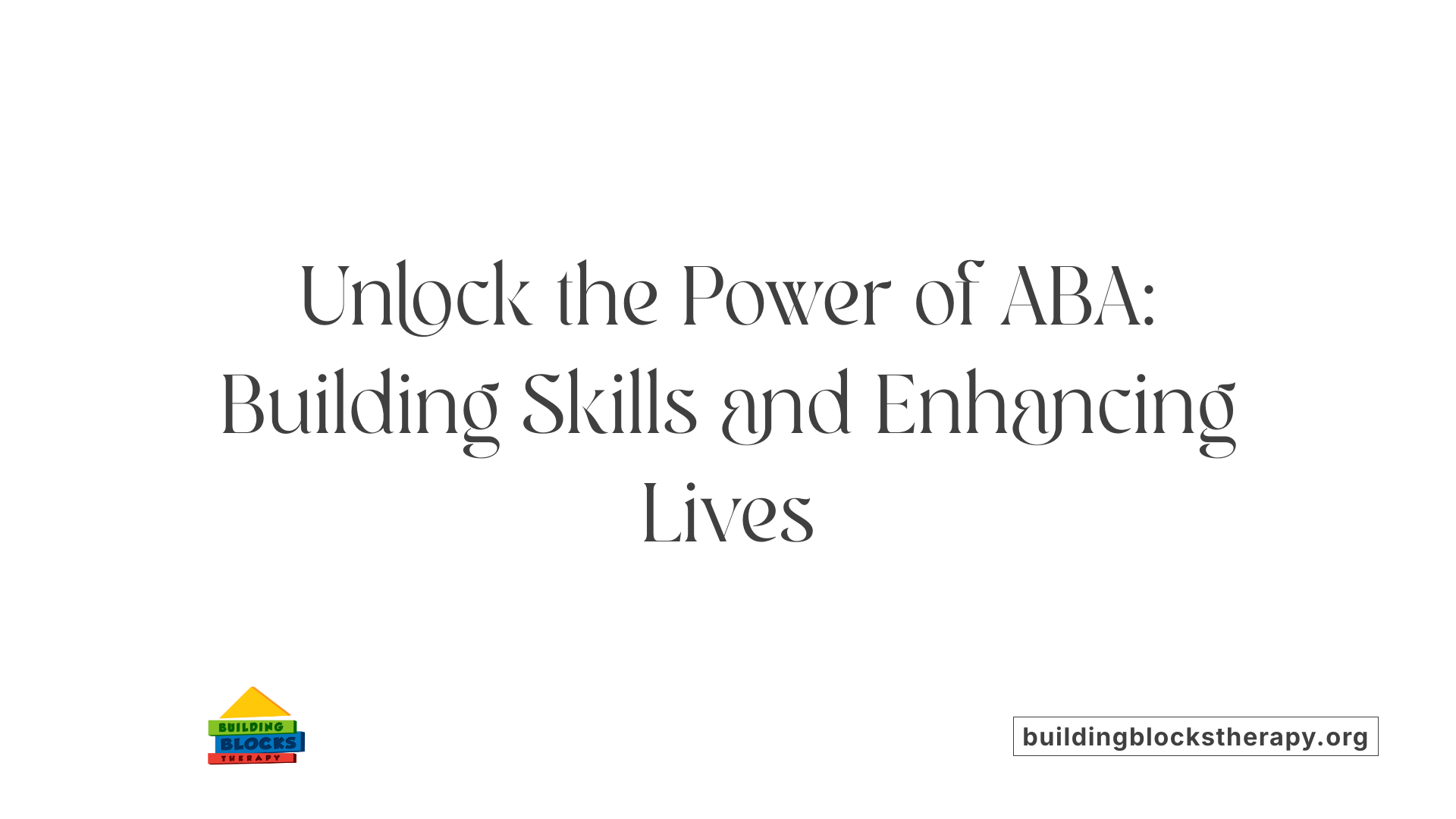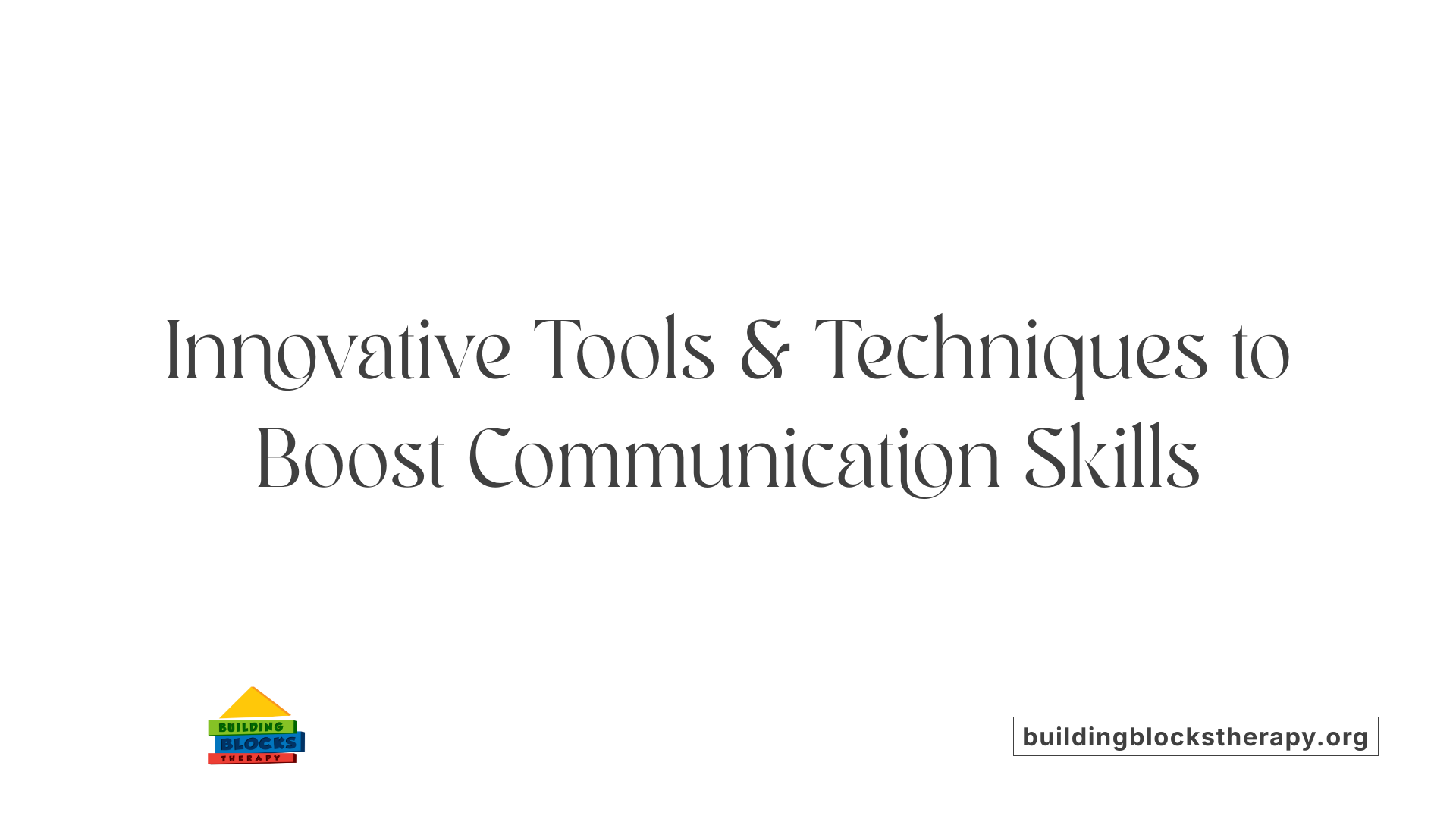How Speech Therapy Helps with Speech and Language Disorders
Integrating Speech Therapy and ABA: A Comprehensive Approach to Autism Intervention

Understanding Speech and Language Disorders in Autism Spectrum Disorder
Children with Autism Spectrum Disorder (ASD) often face significant challenges in communication, including language developmental delays, speech impairments, and social communication difficulties. Speech therapy emerges as a vital intervention to address these issues by enhancing expressive and receptive communication skills. This article explores how speech therapy helps with speech and language disorders, particularly when integrated with Applied Behavior Analysis (ABA) therapy, to provide tailored, evidence-based support for individuals with autism and other developmental conditions.
Applied Behavior Analysis (ABA) Therapy: Foundations and Benefits

What is Applied Behavior Analysis (ABA) therapy?
Applied Behavior Analysis (ABA) therapy is a scientifically based approach focused on increasing positive behaviors and reducing negative ones. It is widely used for individuals with autism spectrum disorder (ASD) and other developmental conditions. ABA applies principles of learning such as positive reinforcement, prompting, and breaking skills down into smaller steps. This method teaches important skills related to communication, social interactions, self-care, and academics. Each ABA program is customized according to an individual's unique needs, typically overseen by a Board Certified Behavior Analyst (BCBA). The process involves analyzing behavior events by looking at what happens before (antecedent), the behavior itself, and what follows (consequences), to design the most effective teaching techniques.
How does ABA therapy benefit individuals with autism?
ABA therapy helps individuals with autism by promoting essential life and communication skills. Through positive reinforcement and detailed behavior analysis, it encourages functional behaviors like requesting, eye contact, and social skills while decreasing undesired behaviors such as aggression or tantrums. ABA enhances language development, self-care abilities, academic performance, and increases independence. It is adaptable to various environments — such as home, school, or community settings — and continuously tracks progress with data to adjust goals. This approach supports children with autism in gaining meaningful skills crucial for everyday life.
Who typically provides ABA therapy services?
ABA therapy is typically delivered by highly trained professionals such as BCBAs, licensed therapists, and Registered Behavior Technicians (RBTs). These practitioners specialize in autism support and behavioral analysis. They conduct thorough evaluations to develop individualized treatment plans and often work closely with families to extend learning into daily routines. ABA therapy may be provided through specialized clinics, schools, or private practices.
What qualifications should I look for when choosing an ABA therapy provider?
When selecting an ABA provider, ensure they hold recognized credentials like BCBA or RBT certifications. They should be skilled in conducting Functional Behavior Assessments (FBAs) and designing tailored treatment plans that use evidence-based strategies. Providers who actively involve caregivers and emphasize respectful, person-centered approaches are preferable. Experience with a wide range of developmental domains—including communication, social skills, and adaptive behaviors—is essential. Additionally, inquire about their methods for monitoring progress and adjusting interventions as needed.
How is an ABA therapy program typically structured?
An ABA program is structured around individualized goals derived from comprehensive assessments. Sessions include engaging activities such as games, role play, sensory experiences, and communication exercises. Positive reinforcement strategies like tokens or stickers motivate the child. Progress is carefully tracked through data collection tools, ensuring goals are met over time. The environment encourages learning by being supportive and consistent. Early intervention, often beginning around age two, maximizes the child's likelihood of significant improvement.
Are there any challenges or criticisms associated with ABA therapy?
While ABA is backed by decades of research supporting its effectiveness, some criticisms exist. Concerns include the intensity and sometimes rigid nature of programs that may feel controlling or insufficiently sensitive to individual emotions. Ethical discussions emphasize the need for respectful, person-centered care to avoid coercion. Some in the autism community advocate for approaches that better honor personal preferences and emotional well-being. Balancing behavioral goals with autonomy and compassion remains important for successful ABA practices.
The Role of Speech Therapy in Addressing Communication Challenges in ASD

What speech therapy techniques are used for autism?
Speech therapy for children with autism spectrum disorder (ASD) employs various engaging and effective techniques. Therapists utilize gesturing, modeling, songs, picture boards, and interactive games to build communication skills. Oral motor exercises are also implemented to address speech impairments often seen in ASD, such as purposive dyspraxia. These exercises progress from gross to fine oral movements, helping improve speech production and coordination.
How does augmentative and alternative communication (AAC) support children with ASD?
AAC tools are vital in supporting verbal and nonverbal communication in children with autism. Techniques include the use of picture exchange communication systems (PECS), electronic communication devices, sign language, and gestures. These methods enhance understanding and expression, especially for children with minimal verbal ability, providing a structured means to communicate effectively.
What are common speech impairments in ASD and how is oral motor training applied?
Many children with ASD experience speech impairments primarily due to difficulties in motor planning and execution, known as dyspraxia. Speech therapy focuses on training imitation skills starting with large oral movements and progressing to finer control. Using play-based approaches with rewards, children develop better coordination necessary for speech clarity.
What are the goals and methods of early language intervention?
Early intervention aims to establish basic communication awareness, increase imitation abilities, and create structured learning environments. Speech therapy starts with foundational skills such as joint attention and social engagement. Techniques include repetitive modeling, interactive play, and integrating communication needs into daily routines to facilitate natural learning.
How is parental involvement integrated into speech therapy?
Parents play a critical role in reinforcing communication skills learned during therapy. Speech therapists encourage parents to incorporate techniques into daily home activities, like using picture boards or AAC devices. Training parents increases consistency and supports ongoing progress, making communication practice a seamless part of everyday life.
| Technique or Focus Area | Description | Purpose/Benefit |
|---|---|---|
| Oral Motor Exercises | Practices for improving control of mouth muscles | Enhance speech sound clarity and production |
| AAC (Picture boards, PECS) | Visual and electronic communication tools | Improve expressive communication |
| Early Language Intervention | Foundational communication skills training | Promote social engagement and communication onset |
| Parental Involvement | Training and collaboration with families | Reinforce skills and ensure therapy carries over |
This multifaceted speech therapy approach, tailored to the unique needs of children with ASD, supports the development of functional, meaningful communication that can grow with the child over time.
Integrating ABA and Speech Therapy: A Collaborative Model for Optimized Outcomes

How ABA and Speech Therapy Complement Each Other
Applied Behavior Analysis (ABA) and speech therapy target communication challenges in children with autism from different yet complementary angles. ABA focuses on reinforcing desired behaviors and teaching foundational skills such as requesting and social behaviors like eye contact and turn-taking. Speech therapy builds on these foundations by developing more complex language, social communication skills, and speech articulation.
Joint Strategies for Communication Skill Development
Both therapies work together to establish and refine communication abilities. ABA techniques such as Verbal Behavior (VB) help instill basic communication forms, which speech therapists then expand using methods like augmentative and alternative communication (AAC), gestures, and modeling. Addressing challenging behaviors through ABA reduces communication barriers, allowing speech therapy to be more effective.
Collaboration Between ABA Therapists and Speech-Language Pathologists
Close collaboration between ABA therapists and speech-language pathologists (SLPs) ensures comprehensive assessments and aligned goals. This integrated approach fosters generalization and consistency of skills across various settings, enhancing overall communication outcomes. ABA therapists contribute behavior data that supports speech development strategies.
Use of Communication Aids
Communication aids such as picture exchange communication systems (PECS), AAC devices, and sign language are incorporated in both therapies. ABA helps children learn to use these tools effectively while speech therapists develop their expressive and receptive communication around these aids, reducing frustration and improving peer interaction.
Parental Training and Home Reinforcement
Parental involvement is vital in reinforcing skills learned during therapy sessions. Both ABA and speech therapists train parents in using communication strategies and behavioral techniques at home. This ongoing support creates a stable environment that enhances progress and promotes autonomy in communication.
Techniques to Enhance Communication: Tools and Approaches in Speech Therapy

Use of Picture Boards, AAC Devices, and Games
Speech therapy for children with autism often involves practical tools like picture boards and augmentative and alternative communication (AAC) devices. These tools provide visual support that helps children better understand and express themselves. Games are also integral, creating a fun and engaging way to practice communication skills, making therapy feel less like a chore and more like play.
Auditory Training and Music Therapy
Auditory training methods such as auditory integration training (AIT) and music therapy can improve how children with autism process sounds and speech. These approaches particularly support language perception in challenging environments, such as noisy rooms. Music therapy additionally helps develop rhythm and turn-taking in communication.
Oral Motor Exercises and Imitation Training
Addressing speech impairments common in ASD, especially those related to purposive dyspraxia, speech therapists use oral motor exercises that progress from broad movements to finer oral control. Imitation training, starting with simple oral movements and advancing to speech sounds, uses games and positive reinforcement to motivate children and build their abilities step-by-step.
Visual and Structured Teaching Methods Like PECS
The Picture Exchange Communication System (PECS) is a structured teaching method that enhances visual tracking and comprehension. It enables children to use pictures to communicate needs and ideas effectively. While expectations may vary, PECS often leads to improved communication capabilities and is widely incorporated into therapy plans.
Engaging Activities to Build Social Communication
Therapists employ varied engaging activities tailored to build social communication skills, including gesturing, modeling, and using signs. These activities encourage vocal inflection and receptive and expressive language through enjoyable, dynamic practices that foster participation and learning.
Together, these diverse techniques form a comprehensive approach in speech therapy, aimed at improving communication abilities and social interaction for children with autism, often integrating seamlessly with behavioral methods like ABA for maximum benefit.
Social Communication and Emotional Regulation: Expanding Speech Therapy Beyond Language

Social skills training and real-life practice
Speech therapy for children with ASD extends beyond language development to include social communication skills. Therapists often incorporate social skills training that involves real-life interactions, such as simulated shopping trips or visits to banks, to help children apply communication techniques in everyday environments. This hands-on practice promotes adaptability and meaningful social engagement.
Emotional management strategies
Children with autism spectrum disorder frequently struggle with regulating emotions. Speech therapy integrates emotional management by teaching positive coping strategies and fostering stable, supportive environments. Family involvement is emphasized, with training designed to support emotional understanding and regulation, thereby reducing frustration and enhancing communication effectiveness.
Addressing comprehension impairments
Comprehension difficulties in ASD relate to challenges in sharing, empathy, joint attention, and decoding social cues. Speech therapists focus on improving social information processing steps—including encoding verbal and nonverbal cues, interpreting meaning, and formulating appropriate responses. This targeted approach enhances understanding and facilitates more meaningful interactions.
Enhancing joint attention and empathy through communication therapy
Joint attention and empathy are crucial for social communication and are common areas of challenge in ASD. Speech interventions include activities that promote eye contact, turn-taking, and perspective-taking. These exercises help children connect with others emotionally and socially, laying the groundwork for improved conversational skills and relationships.
Integrating behavioral and developmental approaches
Effective speech therapy in ASD combines developmental strategies with behavioral techniques such as Applied Behavior Analysis (ABA). While developmental methods build specific language and social skills, behavioral approaches reinforce positive communication behaviors and reduce barriers like frustration or aggression. Collaborations between speech therapists and ABA practitioners ensure consistent learning across settings, fostering generalization of skills and holistic development.
Early Intervention and Its Critical Importance in Speech and ABA Therapies
How does early diagnosis impact therapy effectiveness?
Early diagnosis of autism spectrum disorder (ASD) significantly enhances the effectiveness of speech and Applied Behavior Analysis (ABA) therapies. Identifying ASD as early as possible allows interventions to begin when neural plasticity is greatest, increasing the likelihood of meaningful developmental gains. Starting therapy early targets core difficulties such as language delays and social communication challenges before maladaptive behaviors become entrenched.
Why begin interventions around age two?
Research supports initiating speech and ABA interventions around the age of two, as this period is a prime window for language acquisition and social development. Children with ASD starting therapy at this age show improved outcomes in communication, imitation skills, and social behaviors compared to those who begin later. Early intervention sets a foundation for ongoing learning and greater independence.
What developmental approaches are used in early intervention?
Interventions start with building fundamental skills such as imitation and cognitive responses. Techniques focus on strengthening basic communication awareness and imitation abilities, progressing from broad oral movements to finer speech tasks. Structured environments support learning, using natural developmental behavioral methods alongside behavioral reinforcement strategies. Cognitive training and sensory integration also help improve intellectual responses.
How important is parental involvement from the beginning?
Parental involvement is critical from the earliest stages of therapy. Parents receive training to implement speech and ABA techniques at home, fostering consistency and reinforcement throughout daily activities. Their active participation supports generalization of skills outside therapy sessions, facilitates emotional regulation strategies, and creates a nurturing environment conducive to development.
How is progress measured and therapy adjusted?
Progress is continuously monitored through specific, measurable goals aligned with each child's unique needs. Therapists assess improvements in communication, social interaction, imitation, and behavioral control. Based on these assessments, therapy plans are adjusted dynamically to address emerging challenges and optimize developmental growth. Collaboration between ABA therapists, speech-language pathologists, and parents ensures comprehensive and tailored care.
The combination of early diagnosis, prompt initiation around age two, developmental focus on imitation and cognitive skills, parental partnership, and regular progress evaluations composes the foundation of effective early speech and ABA interventions for children with ASD.
Innovations and Future Directions in Speech Therapy for Autism
What emerging technologies are being used in speech therapy for autism?
Emerging technologies like virtual reality (VR) and social assistance robots are offering innovative ways to enhance speech therapy for children with autism. VR can simulate real-life social situations, allowing children to practice communication skills in a safe and controlled environment. Social assistance robots provide interactive and engaging platforms for practicing speech and social interaction, often responding to the child's speech and behavior to encourage communication.
How do wearable assistive devices contribute to speech therapy?
Wearable assistive devices are becoming valuable tools in supporting communication for individuals with ASD. These devices can monitor physiological signals or provide prompts and cues to facilitate social engagement and emotional regulation, directly supporting the development of speech and language skills during therapy sessions and everyday interactions.
What role do auditory stimulation headsets like Forbrain play?
Auditory stimulation headsets, such as Forbrain, help improve auditory processing, speech production, and self-monitoring. These headsets reduce sound sensitivities and enhance the brain's response to speech, making them useful adjuncts in speech therapy for children with autism, especially those experiencing difficulties with auditory processing in noisy environments.
What are potential complementary therapies supporting speech therapy?
Complementary therapies such as music therapy and animal-assisted therapy are being explored alongside traditional speech therapy. Music therapy supports auditory perception and communication, while animal-assisted therapy can promote emotional engagement and social interaction, both contributing to improved speech and language outcomes.
What are future research trends in speech therapy for autism?
Future research is focusing on integrating advanced technologies with traditional therapeutic techniques. Studies are investigating the efficacy of combining VR, robotics, and wearable devices with behavioral and speech therapies. Additionally, there is growing interest in personalized therapy plans that incorporate genetic, neurological, and behavioral data to tailor interventions more precisely. Continued exploration into complementary and alternative therapies also aims to expand the range of supportive options for individuals with ASD.
Synergizing Therapies for Effective Communication and Development
Speech therapy plays a vital role in addressing speech and language disorders in children with autism spectrum disorder, helping them develop meaningful communication skills and social engagement. When combined with Applied Behavior Analysis (ABA) therapy, the benefits are enhanced through integrated approaches targeting communication, behavior, and socialization. Early diagnosis and intervention, collaborative multidisciplinary efforts, and innovative methods including technology integration contribute to more effective and personalized therapies. This holistic strategy empowers children and individuals with ASD to overcome communication barriers, reduce frustration, and achieve greater independence and quality of life.
References
- Review of intervention methods for language and ...
- ABA Therapy vs Speech Therapy for ASD: Which is Better ...
- Treatment and Intervention for Autism Spectrum Disorder
- ABA and Speech Therapy: Comparing Two Therapeutic ...
- ABA and Speech Therapy Collaboration
- How Speech Therapy Enhances ABA Therapy - Childwise ABA
- Speech Therapy for Autism: How It Helps, Benefits & More
- 7 Real ABA Therapy Examples & Their Benefits
- What Is an ABA Therapy Session? Understanding Its ...






